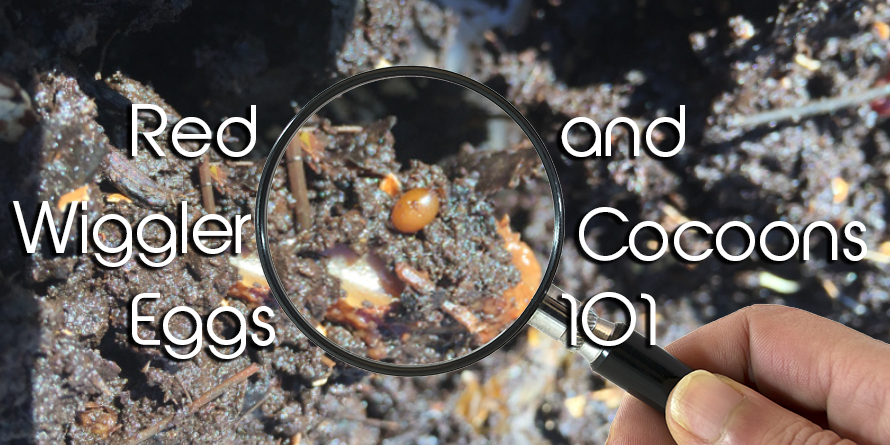Choose Lake Hickory Bait for Fresh Worms, Tackle, and Supplies
Choose Lake Hickory Bait for Fresh Worms, Tackle, and Supplies
Blog Article
Red Wigglers: The Unsung Heroes of Organic Waste Recycling
Red wigglers, or Eisenia fetida, serve as crucial agents in the natural waste recycling procedure, changing discarded products right into important vermicompost. As the globe progressively seeks solutions to deal with waste build-up and improve farming efficiency, understanding the duty of these worms comes to be vital.
What Are Red Wigglers?
The remarkable strength of red wigglers, clinically called Eisenia fetida, underscores their crucial duty in natural waste recycling. These small, reddish-brown earthworms are commonly discovered in breaking down natural matter, such as compost heap and manure loads. Lake Hickory Bait. Unlike other earthworm types, red wigglers thrive in nutrient-rich atmospheres and are highly effective at damaging down organic materials, making them essential for vermicomposting

(Red Wiggler Express)In enhancement to their duty in waste reduction, red wigglers add to soil wellness by boosting soil structure and aeration with their tunneling tasks (Lake Hickory Bait). Their visibility in composting systems not just boosts decomposition rates however additionally advertises a lasting strategy to waste management, showing their value in ecological preservation initiatives
Advantages of Composting With Worms
Composting with worms, specifically red wigglers, supplies many advantages that improve both waste monitoring and dirt wellness. These worms effectively break down organic waste, converting it right into nutrient-rich vermicompost that improves dirt. This process increases decay, allowing for a much faster recycling of kitchen area scraps and various other organic materials contrasted to typical composting methods.
In addition, the vermicompost generated by red wigglers is bristling with beneficial microorganisms, which help boost dirt framework, aeration, and moisture retention. This boosts the total health and wellness of plants, promoting vigorous development and raised returns in gardens and agricultural setups. Moreover, making use of worms in composting minimizes the production of greenhouse gases, such as methane, adding to a much more sustainable waste monitoring system.

Exactly How to Beginning Vermicomposting
Developing a vermicomposting system is a straightforward process that can produce considerable advantages for both waste monitoring and dirt enrichment. To begin, select an appropriate container, such as a plastic container or wood box, with ample air flow openings to ensure proper air flow. The dimensions ought to ideally be about 2 feet by 3 feet, permitting enough room for the worms to thrive.
Next, prepare bedding material, which can include shredded newspaper, cardboard, or coconut coir. This bedding ought to be moistened to produce an appropriate environment for the worms. As soon as the bedding remains in area, present red wigglers (Eisenia fetida) right into the container, commonly around one extra pound of worms for each square foot of area.
Adhering to the positioning of worms, add natural waste, such as fruit and veggie scraps, coffee grounds, and smashed eggshells. With these steps, you will effectively launch a vermicomposting system that contributes to sustainable waste monitoring and enhances your soil.
Keeping a Healthy Worm Container
(Red Wiggler Express)Maintaining a worm bin growing needs normal interest and like make sure the health and wellness of the red wigglers and the performance of the composting process. Correct maintenance starts with keeping an eye on the moisture degrees; the container ought to be wet however not waterlogged. A good guideline is to preserve an uniformity similar to a wrung-out sponge.
Carefully blending the bed linens and food scraps every couple of weeks prevents compaction and guarantees that all worms have accessibility to oxygen. In addition, it is important to feed the worms appropriately.
If the container comes to be as well warm or chilly, the worms may come to be stressed. By vigilantly handling these elements, one can maintain a durable and effective worm bin.
Influence On Sustainable Living
The successful maintenance of a worm container not just benefits the health of red wigglers but additionally adds substantially to sustainable living practices. By reusing organic waste, such as kitchen scraps and backyard particles, red wigglers help draw away considerable amounts of product from garbage dumps. This reduction in waste not just reduces greenhouse gas emissions yet likewise reduces the ecological burden related to waste administration.
Furthermore, the spreadings created by red wigglers serve as a nutrient-rich natural fertilizer, boosting soil wellness and promoting plant development. This natural choice to chemical fertilizers sustains sustainable farming and gardening techniques, minimizing reliance on artificial inputs that can harm ecosystems. In addition, worm composting promotes recognition of waste monitoring, motivating people and neighborhoods to take on more lasting behaviors.

Final Thought
In recap, red wigglers offer as vital contributors to organic waste recycling through their effective decay of organic materials. Their capability to create nutrient-rich vermicompost improves dirt health and wellness and sustains lasting agricultural methods. By integrating vermicomposting into waste administration techniques, individuals and areas can dramatically lower waste while advertising ecological sustainability. The function of Eisenia fetida in promoting healthy environments highlights the significance of these organisms in accomplishing sustainable living and enhancing soil fertility.
Report this page